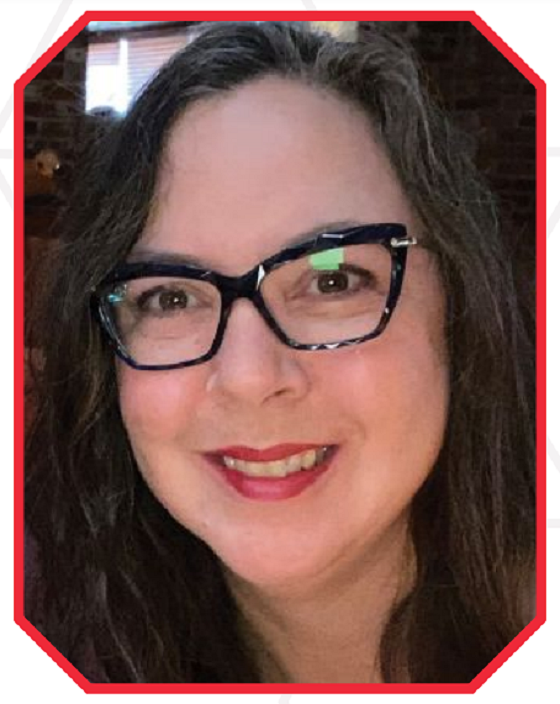Here’s a sneak peek at an ongoing department in MP’s AMPP News, which runs in each month’s print issue. Now that NACE International and SSPC—The Society for Protective Coatings have merged into the Association for Materials Protection and Performance (AMPP), the editors of MP and CoatingsPro Magazine are each publishing their respective profiles of members of AMPP involved in all areas of protective coatings and corrosion control.
This month’s MP interview is with Krista L. Heidersbach, a senior engineer, corrosion, asset integrity at Phillips 66, in Houston, Texas, USA. Since completing her Ph.D. at The Pennsylvania State University (Penn State), she has worked in the chemical, refinery, and upstream sectors before moving to pipelines.
Her technical interests have been geared toward upstream multiphase flow lines where she developed knowledge of “top of the line corrosion” in gas pipelines and preventing corrosion during hydrotesting and/or long-term wet storage. The former has given her significant knowledge of corrosion modeling for CO2/H2S (carbon dioxide/hydrogen sulfide) systems and chemical treatment/corrosion inhibition. The latter has given her significant experience with microbiologically influenced corrosion, diagnosing, monitoring, and treating.
Heidersbach is a Professional Metallurgical Engineer in the State of Texas. She has been a member of NACE International (now AMPP) for over 25 years.
Q: Please tell us how your career in the oil and gas industry has developed over the years.

While working on my Ph.D., I met a classmate of my father’s at a conference. We kept in touch while I was in school and eventually, I was hired on to the same chemical company, Union Carbide. I was interested in that position because it was applied engineering. I was tired of theoretical work and wanted to be able to touch things and see the impact of decisions.
After a few years, Union Carbide was bought out by Dow. During the merger process, I met a retired Chevron employee at a NACE class. He went back and told his old boss that they should interview me. The move to refining from chemicals seemed an easy transition.
After a few years doing U.S. refinery support, I opted to take a position in Houston, working on upstream projects. Eventually, I did a trifecta of things: existing facility support, and projects and management of an applied R&D portfolio. I felt that the projects and existing facilities work gave me the ideas of where we needed to do R&D. It also allowed me to practice my strategic thought process.
Working in upstream, I was able to visit/work in a dozen or so countries, which was the highlight of my career. Eventually, I got burnt out. During the 2015 downturn, I took a package and a few months off of work. I went on a couple of international trips and I slept a lot.
When I went back to work, it was at Stress Engineering Services, as a consultant. Consulting shows you where your strengths and weaknesses lie. At the time, a lot of the work that was coming in was from pipelines, which was an area where I did not have a lot of experience. So, when the commute became unbearable, I started looking for a position at a pipeline operator, eventually landing at Phillips 66, with a 12-mile (19.31 km) commute.
Q: What projects and developments are you most proud of throughout your career?
I am most proud of the people that I have worked with over the years. I was lucky enough to establish a great relationship with a business unit that had a lot of young engineers. They were generous enough to fund my mentoring of those engineers remotely. We would have weekly calls where we talked about what they were working on and how they should approach a problem. I would visit a few times a year.
One recently told me that she works in corrosion because of me. That made me cry a little. She also met her husband while traveling to a corrosion conference, so that was a big impact.
Q: What value have you found from education and training and certifications in your industry?
As a younger engineer, certification was not a big requirement. I was expected to learn on the job, via mentoring and reading standards. However, as the workforce aged and the average age of engineers went down, there was a greater focus on external training. Certifications became more common.
Personally, as soon as I started as a consultant, the first question I had was whether or not I was a Profession Engineer (PE). I ended up taking the PE exam in 2016, almost 20 years after I left school. At the time, I also seriously considered sitting for the NACE Corrosion Specialist exam, as a way of distinguishing myself from others.
Q: In general, how have your activities with associations you belong to affect your work?
I’ve been involved in NACE/AMPP since I left school and I would say that my activities have contributed to each job I have had. In my current role, I was a blind interview, I didn’t know anyone on my panel. They told me at the end that they had been looking at a paper on hydrotesting I had co-authored in 2010. I feel like that publication gave me technical credibility with a new group.
Q: What are you focusing on in your current organization?
I am an internal corrosion specialist for a midstream organization. I spend a lot of time looking at corrosion coupons and corrosion monitoring results. While it’s not my role, this also allows me to learn more about various ILI technologies and cathodic protection. I also serve as a general consultant, which is interesting as the industry is focusing more on new technologies.